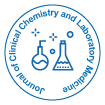

ベニル N. スマントラン 1*、アナンド バブ カンナダサン 2
Multitasking Proteins or Moonlighting Proteins (MLP) play a major role in human disease and many are drug targets. MLPs have a single polypeptide with two different biochemical functions and often have different cellular localizations. Analysis of MultitaskProtDB-II and comparative toxicogenomics databases and Gene Ontology (GO) and STRING analysis, showed that curcumin and resveratrol regulate 3 groups of MLPs. Group 1 MLPs drive Epithelial Mesenchymal Transition (EMT), whereas MLPs in groups 2 and 3 regulate tumor growth and suppression, respectively. The 3 groups of MLPs form a complex self-regulating network due to regulatory interactions between MLPs and the presence of transcription factors (CTNNB1, p53, NRF2) with their regulators and targets. Curcumin and/or resveratrol downregulate MLPs which drive EMT (CTNNB1, FASN, SMADs 2,3,4, MECP2, MMP2, TGFꞵR1, HES1) and promote growth and inflammation (MMP2, EGFR, FGF2, MDR1). Second, curcumin and/or resveratrol modulate pleiotropic, regulatory ‘hub’ MLPs (GSK3ꞵ, NOTCH1, HMGB1). Third, both phytochemicals upregulate tumor suppressor CDH1 and CYCS, which triggers apoptosis. Fourth, both phytochemicals modulate p53 expression, activity, and independently downregulate tumorigenic gene targets of p53 in groups 1 and 2. This dual mechanism can permit regulation of p53 activity in cells with wild type or mutant p53. Fifth, moonlighting functions of specific MLPs can cause unpredictable effects. These results add insights into synergistic and pleiotropic anti-cancer mechanisms of curcumin and resveratrol. It has clinical relevance because both phytochemicals are chemo-preventive agents and chemo sensitizers in clinical trials.